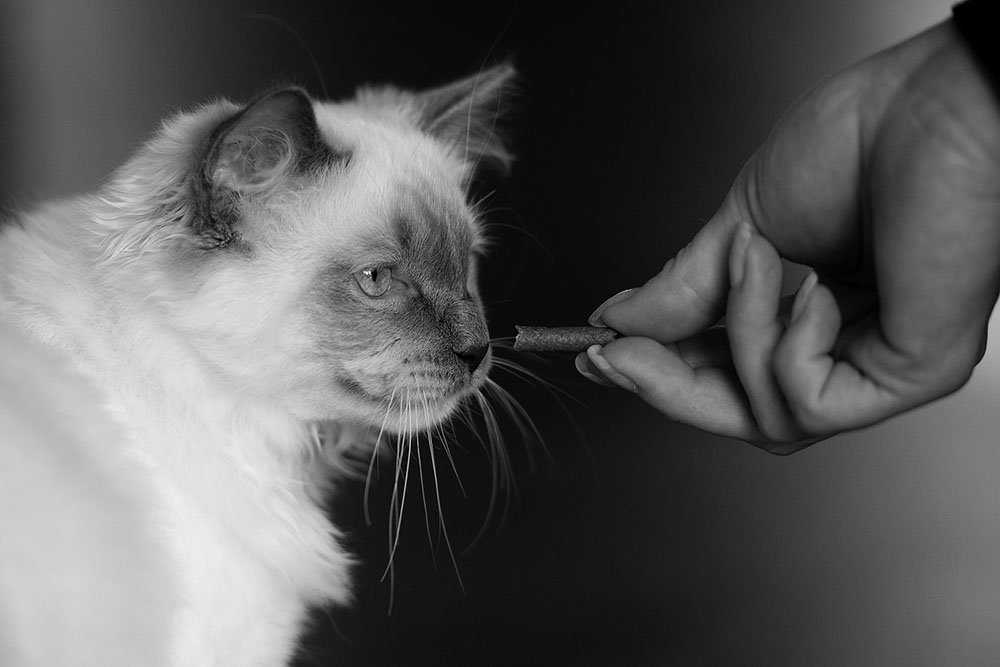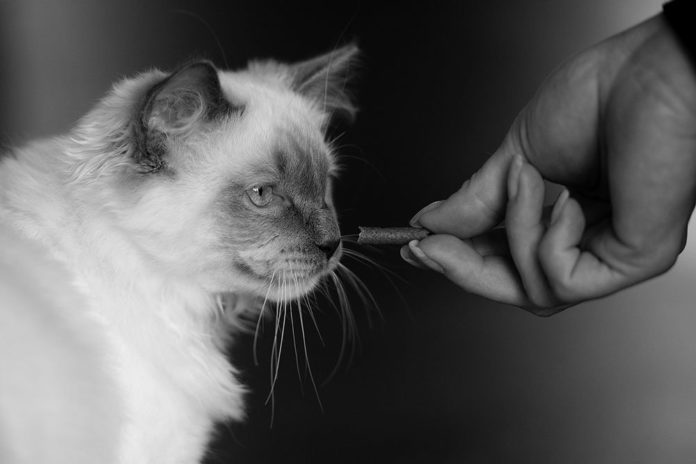It’s almost a mantra in any discussion of pet obesity and healthy eating: We should limit treats to no more than 20 percent of our cats’ daily diet. Some nutritionists advise lowering the limit even more to 10 percent. But how do we determine the calories in our cat’s favorite treat? Perhaps the manufacturer doesn’t list calories on its packaging.
The result can be that, if we give our cat a handful of treats, he can quickly reach that 20 percent limit. Here’s how: A typical adult cat who weighs 8 to 10 pounds needs only 160 to 250 calories a day, says nutritionist Joseph Wakshlag, DVM, Ph.D., president-elect of the American College of Veterinary Nutrition and a faculty member of the Cornell University College of Veterinary Medicine.
Eager Offerings. At that lower limit, a cat could reach the 20 percent treat threshold by consuming 16 Temptations or 11 Pounce soft-moist treats. “All those nice tendery, morselly things are what cats really like, so people tend to get a little overly rambunctious in offering them,” Dr. Wakshlag says. “If the cat likes it, they keep feeding it.”
Bigstock

Occasional human treats also can add up. According to the USDA, a single ounce of chunk light tuna packed in oil, intended for people, contains 56 calories when drained.
Calorie counts may be required on the labels of pet food by the end of the year as a result of a recommendation from the Association of American Feed Control Officials (AAFCO). While the organization has no regulatory powers, states usually follow and mandate its recommendations.
Treats were not included in the first round of recommendations, but Stan Cook, chair of the AAFCO Pet Food Committee, expects them to be added shortly. What’s an owner to do? “I think if you’re going to use a treat, why not use one that at least has some sort of health benefit.” Dr. Wakshlag says. Take dental treats, for example. “At least they’re going to clean their teeth.”
His black domestic shorthaired cat Kermit gets no pet treats because he’s too plump and has been on a weight-loss regimen, Dr. Wakshlag says. On rare occasions when Kermit’s entreaties are answered, “We basically go and put more food in his bowl. Some weight loss is better than no weight loss.”




